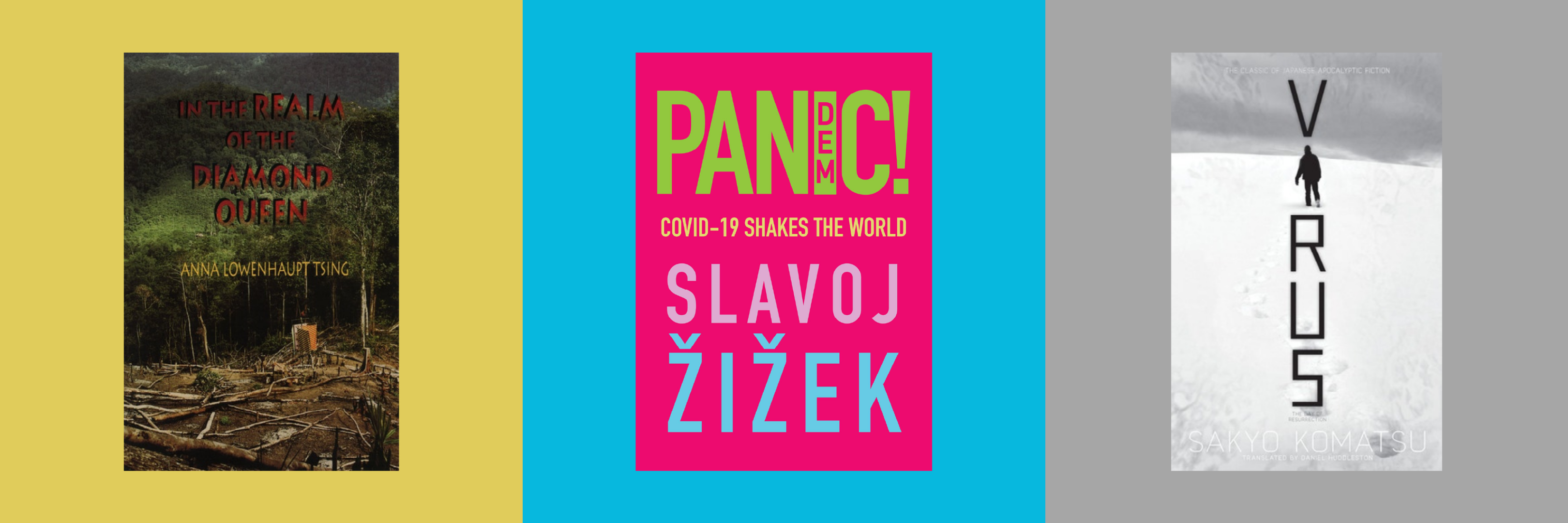Architect Rachel Armstrong establishes an alternative approach to sustainability. Through a close reading of computational properties of the natural world, Armstrong develops a 21st century production platform for the built environment, which she calls 'living' architecture. Armstrong diversifies the protocols of life to enable a deeper understanding of the relationship between creature and niche, physics and reality, or building and site – by embracing the fundamental strangeness of the living world.

In the Realm of the Diamond Queen: Marginality in an Out-of-the-Way Place by Anna Lowenhaupt Tsing
Are we living in a superorganism? To explore the intertwined complexities of life, Tsing travels to Meratus Dayaks, a marginal and marginalized group in the deep rainforest of South Kalimantan, Indonesia, Tsing deliberately sets into motion the familiar and stubborn urban fantasies of self and other. Unusual encounters with her remarkably creative and unconventional Meratus friends and teachers, however, provide the opportunity to rethink notions of tradition, community, culture, power, and gender and the doing of anthropology. Engaging Meratus in wider conversation Tsing looks not for consensus and coherence in Meratus culture but rather allows individual Meratus men and women to return the western gaze. Bearing the fruit from the lively contemporary conversations between anthropology and cultural studies, In the Realm of the Diamond Queen will prove to be a model for thinking and writing about gender, power, and the politics of identity.
Get In the Realm of the Diamond Queen here.

Pandemic!: COVID-19 Shakes the World by Slavoj Zizek
As the viral pandemic continues to spread, so too does the world’s collective uncertainty. Who better than the supercharged Slovenian philosopher Slavoj Zizek to uncover its deeper meanings, marvel at its mind-boggling paradoxes and speculate on the profundity of its consequences? We live in a moment when the greatest act of love is to stay distant from the object of your affection. When governments renowned for ruthless cuts in public spending can suddenly conjure up trillions. When toilet paper becomes a commodity as precious as diamonds. And when, according to Zizek, a new form of communism – the outlines of which can already be seen in the very heartlands of neoliberalism – may be the only way of averting a descent into global barbarism. Despite the biological impact the virus has on our lives, the cultural impact of the virus seems to play an evenly important role, potentially surpassing the impact it has on our biology. Zizek provides a concise and provocative snapshot of the crisis as it widens, engulfing us all.
Get Pandemic!: COVID-19 Shakes the World here.

Virus: The Day of Resurrection by Sakyo Komatsu
Stories allow us to experience the world before we actually have to experience it. Art imitates life. In Virus: The Day of Resurrection, a mysterious virus wipes out all of humanity, except for researchers in the frigid Antarctic. To save what is left of the world from nuclear destruction, the scientists must find a way to return to America. In this classic of Japanese SF from 1964, American astronauts on a space mission discover a strange virus and bring it to Earth, where rogue scientists transform it into a fatal version of the flu. After the virulent virus is released, nearly all human life on Earth is wiped out apart from just ten thousand men and a handful of women living in research stations in Antarctica. Then, one of the researchers realizes that a major earthquake in the now-depopulated United States may lead to nuclear Armageddon. Life imitates art.
Get Virus: The Day of Resurrection here.

Share your thoughts and join the technology debate!
Be the first to comment